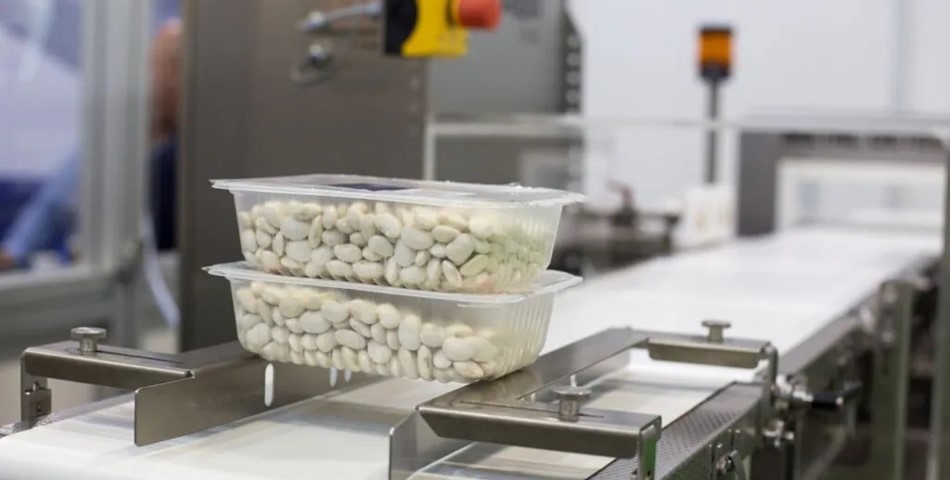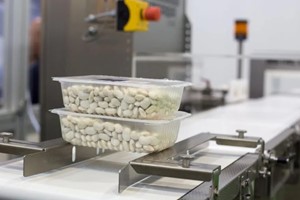With evolving technology, new machines are applied in all industries where everything was done manually at one time. Food packaging is one of the most prominent industries which has made full use of the scientific evolution of this day.
Every food product you utilize besides fruits and vegetables comes in some sort of packaging. Regardless of the food type, this packing is done with an automated food packaging machine.
What is Automation in Food Packaging?
Automation in the food packaging process involves using robotics for food material handling in the packaging process. Packaging facilities earlier utilized the processing of food items through manual methods, such as using human workers for picking and placing food items from one place to another.
Is Automation Widely Used Across the Food Packaging Industry Today?
Without a doubt, you will find automated food packaging line in every segment of the food packaging industry. There are robotics solutions for every type of task that you can think of in the packaging line, from simple pick and drop to complex operations like sealing cans or making pouches.
In fact, even when you buy a candy worth a few cents, it has also gone through phases of food packaging automation equipment.
How is Automation Useful in Food Packaging?
Safety & Protection
Automated industrial robots increase the protection and workspace safety, thereby avoiding worker injury. For example, the processing and packaging of meat items can be done by automated systems instead of manual labor, eliminating injury due to sharp knives.
Productivity
The use of robotics in the food industry can increase production line productivity multiple times. Machines can process tens of products at the same time that it takes human workers to process one.
Flexible
The performance and output of automated food packaging robots can be adjusted as required by the manufacturers.
Scalable
Automation is a scalable solution for food packagers. To increase the output by two times, another food packaging machine can be installed. In earlier times, manufacturers had to scale up every aspect of the business to increase production.
Lower Operating Costs
An automated food packaging factory has to bear a lower cost of operations as compared to manual food packaging. This is because machines in an automated factory only require electricity and other running costs are negligible, making them cost effective.
Consistency of production
All the output of automated food packaging results in producing consistent products. Since packing is done by machines, there is no human error involved in the products. Every product will have the same dimensions, same weight, and same visual look making them virtually identical.
End-to-end Traceability
Automated food packaging provides end-to-end traceability of the entire production line. Manufacturers have records of the exact facilities and packaging processes that a food product has gone through, with the help of the codes used in automated labels.
Types of Automated Food Packaging Technology
Pick and Place Robots
As evident in the name itself, pick and place packaging robots lift food products from one place and place them in another location. These robots are even capable of lifting food products from a moving assembly line.
Case Packing
Robotic cases packing machines, also known as case packers, pack food products into cases. These machines are generally used for the secondary packaging of food products. Secondary packaging implies that the case packing system does not touch the food products directly, but is separated by another packing method.
Boxing
Boxing, or box packing machines, are used to load products into boxes. Additionally, these machines also do the job of creating the boxes from plain sheets of cardboard. These machines are usually used in the secondary packaging or tertiary packaging of food production.
Palletizing systems
Palletizing systems are the last step in the food production and packaging line. It involves stacking boxes one on top of the other to form pellets. This is almost always a tertiary packaging method accomplished by collaborative robots.
Depanning
Depanning technology is utilized to remove frozen food items from any surface. Frozen items can often stick to surfaces such as pans during food processing, which is why depanning machines are used for preserving food integrity.
Cutting
Cutting machines are versatile equipment and are used throughout the entire food industry. A common example of food-cutting robots can be seen in packaged meat products.
Raw Food Packaging
Raw food includes items such as uncooked vegetables, fruits, seeds, grains, etc. Raw food packaging is a primary packaging technology that specializes in these items. This is generally done by using paper or polythene material that does not react chemically with the food items, and is cost effective.
Denesting
Denesting machines don’t deal with food items directly. These automated machines are used to separate packed items. You might have seen trays stacked on top of one another. The purpose of denesting is to separate each tray from the ‘nest’ and forward it to the food packing station to reduce downtime.
Basket Packaging
Basket packaging is commonly utilized for food items that are intended as a gift. These machines can place and pack items into decorative baskets.
End-of-line Packaging
End-of-line packaging is a tertiary packaging process, where food items are placed in the final packing method that will make them ready for transportation. This packaging is commonly not seen by the end consumer, as this is removed by retail outlets.
Flow Wrapping
In flow wrapping, food items are sealed into a polypropylene film. It is a versatile and effective primary packaging method, as it can be used for almost every food and beverage item. It is often known as fin packaging, as it creates a fin at the end of the packaged pouch.
Tray Packaging
Tray packaging can pack meals, meats, baked goods, or any other food items into trays that are enclosed with lids. Trays are one of the most common food packages, due to their ability to handle food items of different types and temperatures without harming quality.
Conclusion
Automation in food packaging is no longer a trend, it has become a norm. In fact, if anyone in the food and beverage industry isn’t using the latest food robotics, they might not even be able to keep up with the competition.
This is why Pwrpack provides a lot of food processing plants globally with the equipment they require to pack their food right. The best part is that these machines are highly reliable solutions and sturdy build quality to withstand whatever you put them through.











